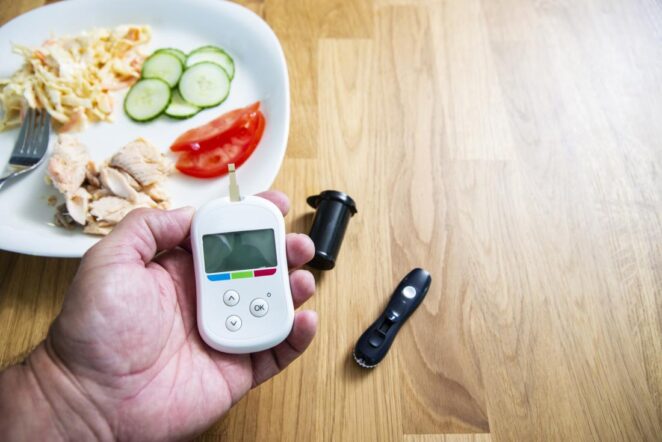The Glycemic Index (GI) is a list of all the foods we eat that rank how high they spike your blood sugar. The GI was originally developed in 1981, and since then it has become widely popular. It is a tool to help maintain healthy blood sugars to prevent diabetes and weight gain.
What is GI?
The Glycemic Index ranks how quickly carbs are digested into glucose, which affects your insulin levels, weight gain, and diabetes risk. Processed and dairy foods have the highest GI and are highly refined, whereas fruit and vegetables have the lowest GI.
Glycemic Indexes are used to monitor the impact of foods on blood glucose levels. This information can help you assess your diet, and make informed decisions on food choices. A reduced glycemic index can contribute to weight loss because it helps slow down the absorption of carbs into your bloodstream. The GI is based on the difference in spiking of blood sugar following consumption of specific carbohydrate foods.
To calculate the GI, you take your carb content and divide it by 100. Then you use a sliding scale that starts at 50 and goes up. If a food has a score of 70 or more, its ranking is categorized as high and foods with scores below 55 are low.
How does GI affect your body?
1. Hormonal Balance

Insulin is a hormone that regulates how your body processes carbs, fats, and proteins. Most people who eat a high glycemic diet with many processed carbs end up with insulin resistance and an increase of body fat. This is because insulin does not work effectively to process the high levels of sugars and carbs, making it harder for your body to digest and burn those calories. Referring to the Medzone Clinic, the glycemic index of food directly affects your insulin and glucagon, as well as indirectly the rest of the endocrine system including Testosterone Growth Hormone and Dopamine.
2. Metabolic Rate
The GI of your food directly affects Insulin and Glucagon, which both regulate the metabolism. If you eat high GI foods, your insulin levels will be elevated for a longer period of time, which will slow down the metabolic process in your body to burn fat. However, if you eat low GI carbs you will have a lower rise in blood sugar and maintain a steady supply of energy, which leads to increased energy levels and fat-burning over time.
3. Cholesterol
A diet high in processed sugars and carbs is the first step to creating more bad cholesterol, which increases your risk for heart attacks. It is important to have healthy levels of good cholesterol, as well as depleted bad cholesterol. Most people have a higher amount of triglycerides in their body, which directly affects the bad cholesterol levels in your bloodstream. By monitoring your glucose and carb intake you can keep insulin and triglyceride levels low, which will decrease the amount of bad cholesterol in your body.
4. Blood Glucose
If you have diabetes, high blood sugar levels can lead to organ damage and blindness, which is why managing it is so important. An effective way to lower your blood sugar is to monitor your carb intake and the GI of foods you eat. The higher the GI of foods you eat, the harder it will be for your body to regulate itself in processing those carbs into glucose. However, if you choose low GI carbs, then you will reduce the amount of sugars in your body that can spike and crash your systems, ultimately boosting insulin sensitivity.
5. Weight Control

If you are trying to lose weight, you should focus on foods high in complex carbs, which come from fruits and vegetables. These foods are low in calories, but do have a large insulin response, meaning they have a very low GI. Therefore these foods will keep your insulin and glucose levels stable by stabilizing your blood sugar levels. With that, you will be less inclined to feel hungry and crave for high carb foods, which leads you to maintaining a healthy weight.
GI In Foods
1. Low GI
Most fruits and vegetables have a low GI because they are high in fiber and nutrients, which slows the digestion process of your body. These foods include broccoli, cabbage, carrots, sweet potatoes, barley, legumes, whole grains, brown rice, apples, pears, and peaches.
2. High GI
If you eat high fat dairy products and white flour which have a high GI, you may want to consider consuming them less often as they contain more calories and fat. Other foods with high GI include heavily processed grain such as white rice and white pasta, potatoes, fries, chips, watermelon, pumpkin, snacks such popcorn, crackers and cookies, and breakfast cereals.
High GI and Diabetes Risks

If you suffer from Type 1 or 2 diabetes, it is important to keep a close watch on your blood sugar levels to prevent complications and keep your body healthy. Consuming high GI food can damage your body by increasing insulin resistance, which causes your body to store fat. Decreased insulin sensitivity causes glucose to stay in the blood longer, which drives up the blood glucose levels and leads to a condition called hyperglycemia. High blood glucose levels can also damage your eyes, heart, and kidneys, so be sure you monitor what you eat.
Conclusion
Monitoring your GI can help you make better food choices, which is important because it leads to weight loss and lower amounts of bad cholesterol in your body. It also helps regulate your blood sugar levels and regulates your insulin levels, which keeps you full longer as well as stabilizes your metabolism.




